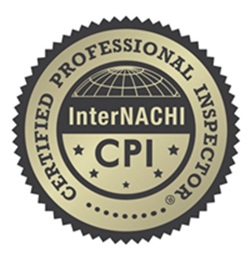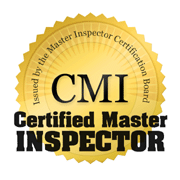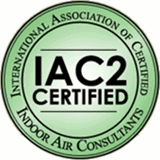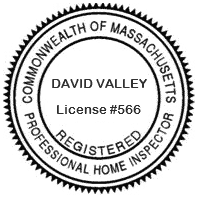Massachusetts Home Inspections YOUR INVESTMENT IS MY CONCERN
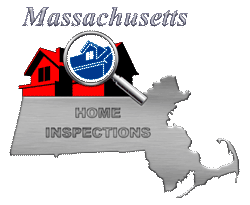
Heating/Cooling System Maintenance


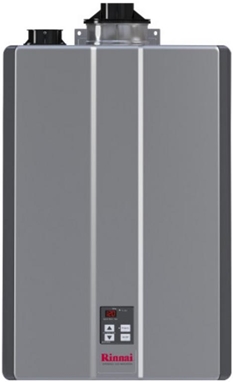
TYPES OF HEATING
Depending upon where you live in Massachusetts and how your house was built, your home may have any of several different types of climate systems that help you to enjoy your interior spaces year-round. Forced-hot water boilers, steam boilers, and furnaces (all fueled by gas or oil) and todays more efficient tankless water heaters (powered by electric or gas) are very common types of heating systems here in Massachusetts. Other types of heating systems that I see (but are not so common in Massachusetts) are radiant floors and ceilings, Electric baseboards, Heat Pumps and Wood and Pellot burning stoves.
Furnaces, boilers, tankless water heaters, electric baseboards, heat pumps and radiant heating systems can be unique in their operation and maintenance. My examination of your heating and cooling systems is mechanically limited since the units are not completely dismantled to examine the interior components or heat exchangers. All heating and cooling appliances, including electric baseboards and radiant heating systems are tested by operating the thermostat or controls as a user would normally operate them on a daily basis. Gas shutoff valves are absolutely not tested but if I do smell gas odors in your home during the home inspection, I will be pinpointing the exact location of this gas leak with my gas detector.
Your heating equipment should be inspected and serviced on an annual basis. Before closing on escrow, I highly recommend obtaining (from the Seller) any documents concerning regular maintenance and service by a heating contractor. If the heating components cannot be proven to have been inspected by a licensed heating contractor within the past twelve months, I highly recommend you have a complete heating system evaluation by a qualified heating specialist before your closing documents are signed.
BOILER SYSTEMS (Forced Hot Water)
Boilers have presurized water that automatically feeds into the boiler. This water is heated, usually to between 170 and 190 degrees fahrenheit. When your thermostat is turned up or the thermostat senses that the room is cold, the boiler fires up and heats the water within a vessel inside the boiler. Once the water gets hot, the pumps then circulate this hot water through the heating pipes in your building. This heated water warms the cast iron radiators or baseboards that are installed in each room. These radiators and baseboards, in turn, warm the air in the room. Boiler systems need regular maintenance to keep them operating efficiently. There is a danger of scalding or steam burns when working around a boiler system, so any maintenance to the boiler should be left to the licensed plumbing professionals.
I recommend that you have your boiler serviced annually to maintain proper efficiency. Some older circulating pumps require periodic oiling at the 3 small ports on top of the circulating pump itself. If your boiler is equipped with these older pumps, verify that your plumber is oiling these ports. Routine annual inspection and cleaning by a qualified, licensed Plumber will keep your hot-water system running for many years to come without trouble.
A dirty, inefficient boiler will cost you far more than the service call. The serviceman catches little problems before they become big trouble. And a neglected system fails years sooner than a well-maintained one. Annual service keeps the system running properly and heads off most problems. You should also keep an eye on the system to make sure that all is well between inspections.
BOILER SYSTEMS (Steam)
Steam heat is an older style heating system, typically installed in buildings constructed before the 1950s. Water is heated in a boiler in a similar manner as forced hot water but does not utilize circulating water. The boiling water is heated until it becomes steam. Steam, which is a gas, rises through a much wider heat piping and into the cast iron radiators in each room. The rising steam causes these radiators to become hot. These radiators warm the air in your building.
Most steam boilers need water added periodically during our cold weather periods of winter. Some steam boilers have automatic water fill valves that will automatically add water when the water level becomes too low. If your boiler fails to start when the thermostat is calling for heat, it could be the result of the low water cut-off valve shutting the system down due to an insufficient water level. Check the glass tube on the side of the boiler. Make sure that there is a sufficient water level. If not, add water to boiler until the glass tube water level reaches 3/4 from the top. Never overfill this glass tube as water will start exiting from air vents and radiators. What a mess this will turn out to be. Once the boiler senses that water is sufficient, the boiler will now operate as intended.
Your Steam boiler will also need a weekly draining to keep sediment from building up inside and potentially blocking or clogging the interior components and valves. I recommend draining approximately 2 gallons (or until the exiting water begins to clear up), at least once a month.
TANKLESS WATER HEATERS
Tankless water heaters (also known as demand-type or instantaneous water heaters) run on electricity, natural gas, or propane and are much more efficient today because they don't store and heat water in a tank like a boiler does. Boilers have standby heat loss because the heated water within the boiler cools down as it’s being held in the storage tank until it's needed. That requires the boiler to periodically heat the water to keep it at the same temperature, even when it’s not actually being used. In contrast, tankless heaters don’t have this additional energy spend since no water is heated until it’s needed. Instead, they heat water as it passes through the unit, using a heat exchanger to rapidly bring the water up to temperature. Heating domestic water only when you need it eliminates the standby energy losses you get with a storage tank.
These tankless water heaters heat your home and your hot water supplies at your kitchen and bathrooms. Once your thermostat (or faucet) is calling for heat or hot water, the high-powered burners inside the unit ignite and rapidly heat up the heat exchanger. Water gets heated to 140 degrees fahrenheit as it passes through the heat exchanger, and exits the hot water outlet pipe to travel through the heat pipes in the rooms of your home or to the water fixture where hot water is needed. The tankless water heater will adjust flame output as needed to ensure the temperature set point is maintained. Once all hot water areas are satisfied, this tankless unit will shut down and cold water will stop flowing then the flame extinguishes. The tankless water heater is now off until the next time hot water is called for.
FORCED AIR SYSTEMS (Heating and Cooling)
In a forced hot air heating system, the heat exchanger in a furnace is warmed by the burning fuel that is below it. A blower fan circulates the air from inside the home over the warm heat exchanger. This warmed air is then circulated throughout the home in each room. This process heats the home through the floor, wall or ceiling registers.
In some homes, the forced hot air heating ducts are also used for Central air conditioning, which is an electric powered split-system. The two prime components of the system include the compressor unit and the evaporator unit. (Notice: The outside compressor unit has an average twelve to fifteen year service life with proper maintenance.) The heaviest and noisiest heat-shedding components (the compressor and condenser coil), are installed outdoors, while the evaporator coil is installed indoors, usually in the form of an A-frame in the plenum above the forced-air furnace. In this case, the furnace's blower moves the interior warm air over the coils and distributes it into a chilled air. Two refrigerant lines run between the compressor and evaporator. The larger line (vapor line) should always be insulated to maintain temperature and prevent it from sweating. A condensate drain line runs from the indoor evaporator to a drainage point. This drain line may be connected to a device called a condensate pump if the installation elevation requires pumping the condensate up to an outside draining area.
The central air conditioning system shares the same duct distribution system and blower unit filter as the heating furnace in order to deliver cool conditioned air to the habitable rooms serviced by the system. One of the most important things you can do to maintain your forced air furnace and keep it running smoothly and efficiently is to change your air filters on a regular basis. Once every three or four months is about right and it will prolong the life of your Furnace and improve the quality of your indoor air as a result. As you install the new air filter, make sure to have the arrows pointing in the direction of the air flow. Just remember, the air flows into the return duct towards the blower compartment. Disposable filters are recommended, but you may also utilize a washable filter made of steel or soft mesh. At the start of each heating season, open the blower compartment of your heater and make a visual inspection. Gently scrape the dust and grime off the blower blades with a screwdriver or putty knife. Most modern blower motors are sealed and self-lubricating. But if you have an older system, the motor may have an oil reservoir. If so, you should fill it at the start of the heating season.
If you have a gas furnace, a professional tuning and cleaning every two years is a good idea. Electric furnaces should be professionally inspected every two years and for oil furnaces; it's a good idea to schedule a tune-up every year. If you have an older furnace (15 years or more), I highly recommend that you request your HVAC technician to literally inspect the Heat Exchanger for any cracks, holes or leaks, as my furnace inspection is mechanically limited since the furnace compartments require dismantling to examine this particular area. A Heat Exchanger inspection is vital because a deteriorated heat exchanger could allow deadly products of combustion into your living area.
RADIATORS
Radiators usually aren't the most attractive element in the room, so most people try to disguise or hide them. But this can significantly reduce the amount of heat that reaches the room. Air needs to circulate underneath the radiator, so avoid pushing furniture up against the radiator or covering it with draperies. If you like to have a shelf or cabinet around your radiator, make it easy to remove during the heating season. If you paint your radiator, be sure to use the right type of paint - choose one that's made specifically for "high-heat" applications. Otherwise it may crack or peel within a few days. Keep in mind that multiple layers of paint can also cut down on the amount of heat that reaches the room.
There is an easy way to improve the efficiency of your radiators - just add a reflecting panel behind it, against your wall. You can purchase them at a home center or hardware store, or you can fashion your own with a piece of plywood or paneling and place smooth sheets of aluminum foil onto this material. If you feel that a certain radiator makes a room too hot, you can shut it down completely by turning the control knob on the lower end of the radiator or just turn the bleed valve that is located on the upper side (if equipped) in order to lower the temperature in a room.
HEAT PUMPS
Heat pumps do not generate heat. They simply move heat from one place to another by transferring heat, rather than burn fuel to create it. Essentially, a heat pump is an air-conditioner unit working in reverse mode. In the summer, a heat pump functions like a normal air-conditioner when the temperature is above 65 degrees Fahrenheit. (Use of A/C mode at colder outside temperatures could damage your compressor). In the cold winter months, the heat pump will be operated in a reverse mode.
In this reverse mode, the heat pump heats a building by absorbing the available heat energy from the outside air. Heat pumps are most effective at saving energy when in the heating mode. The problem with an air-source heat pump in a cold climate, however, is that your household needs more heat as the temperature outside goes down, but the heat pump works less efficiently at lower outdoor temperatures. Below a temperature known as the "balance point," normally from 30 to 45 degrees F, supplementary heat is required and that means that expensive electrical-resistance heating now kicks in. In this particular mode, the heat pump can be quite expensive to operate.
Heat-pump performance will deteriorate without regular maintenance and service. The difference between the energy consumption of a well-maintained heat pump and a severely neglected one ranges from 10 to 25 percent. Always make sure you turn the power on at least 24 hours before using A/C or the Heat pump. Never cycle quickly between the two operating modes as this could damage your system.
REGULAR MAINTENANCE
Either the homeowner or service technician can perform the following routine maintenance tasks:
-Clean or replace filters regularly (every 2 to 3 months, depending on operating time and amount of dust in the environment).
-Clean the outdoor Condenser coils as often as necessary (when dirt build-up is visible on the outside of the coil). Also, remove all plant life and debris from around the outdoor Condenser.
-Clean evaporator coil and condensate pan (located above the heat exchanger area) every 2 to 4 years.
-Clean the blower's fan blades (located in the lower plenum).
-Clean every supply and return register and straighten out their fins.
PROFESSIONAL MAINTENANCE
You should have a professional HVAC technician service your heat pump every year. The technician should be:
-Inspecting ducts, filters, blower, and indoor coil for dirt build-up and other obstructions.
-Diagnose and seal any duct leakage.
-Verify adequate airflow by measurement.
-Verify correct refrigerant charge by measurement.
-Check for any refrigerant leaks.
-Inspect electric terminals, and if necessary, clean and tighten connections, and apply a nonconductive coating.
-Lubricate motors, and inspect belts for tightness and wear.
-Verify correct electric control, making sure that heating is locked out when the thermostat calls for cooling and vice versa.
-Verify correct thermostat operation.
PERIODIC MAINTENANCE
Motorized equipment, like your heating system, requires regular adjustments, burner cleaning, parts replacement, repairs, venting inspection, and other checks. Licensed experts know your equipment and the necessary codes to follow. Your heating contractor can help make your equipment operate with peak efficiency, last longer, and save you money year after year. Having an annual service plan in place will also guarantee you an on-call, 24 hour a day service technician to arrive at your house in case of a heating emergency.
HEARTH APPLIANCES
Some homes have wood-burning stoves, pellot-burning stoves, or fireplaces. While a stove or fireplace can warm a building, it cannot be counted on to provide continuous heat. All of these systems require that the fuel be replenished on an ongoing basis. While this may suit a quiet getaway weekend in the Massachusetts country, it is seldom a match with modern lifestyles. Only depend upon a wood-burning stove, pellot-burning stove, or fireplace as a supplemental source of heat.
It is best to burn only seasoned wood for maximum heat release, less creosote buildup, and economy. Avoid burning green (unseasoned) wood which may contain up to 50% of its weight in moisture and needs to be burned off before any heat can reach your house.
Stovepipes and chimney flues should be inspected by a chimney professional each year before you use your stove. They should check for all signs of deterioration such as cracked flue liners, leaks, warping, baffle gaps, broken or missing bricks, heavy creosote deposits, bird nests and other foreign material. Thoroughly clean the flue and stovepipe of any soot and other residues. The stovepipe and chimney should be inspected frequently during the heating season for creosote buildup. If you use an air-tight stove, check the stovepipe at least once a month. Your chimney cleaning schedule will depend on how frequently your stove is used and how it is operated.
Here is what my clients have to say about my home inspection services:
Press F5 (on your keyboard) for additional testimonials
Hi David,
I just wanted to send you a quick note to thank you again for your help yesterday!!
Andy and I are very appreciative of all of the information you provided us with, and we both feel that we have an excellent understanding of what needs to be done to this home, and can make our decision with assurance. The tips that you provided us with are invaluable, and I will definitely recommend you to anyone I know that is or will be buying a home.
Thank you again!
Alyssa


